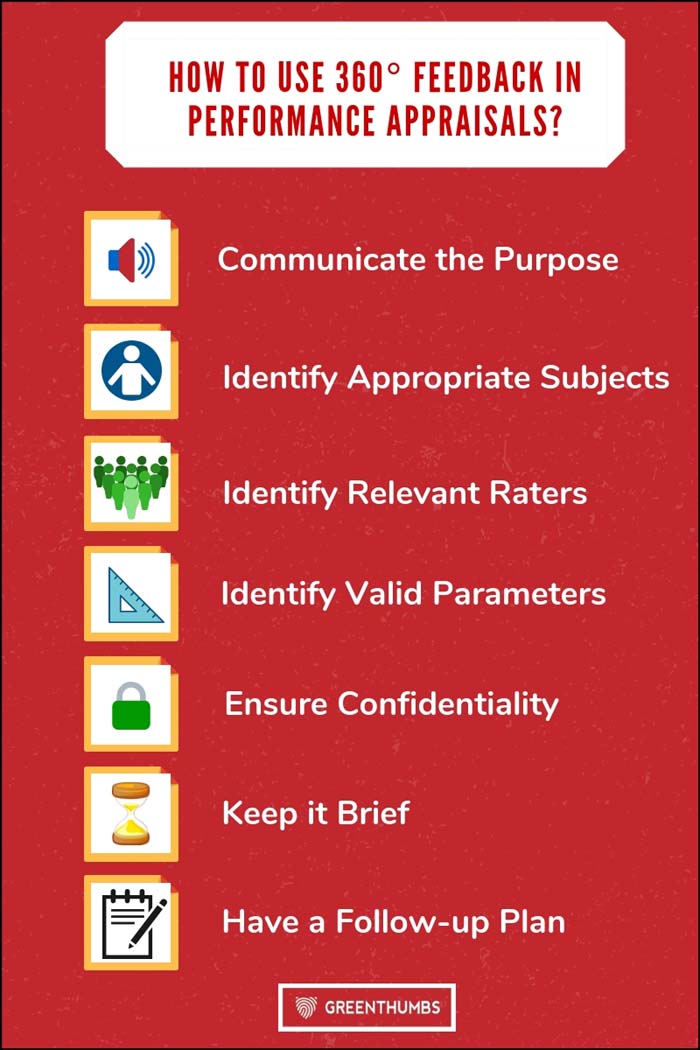Blogs
Get latest insights on what's trending in the HR world - Talent Search, Talent Assessments, Psychometrics, Employee Engagement, Appraisals & much more.

Want to run successful appraisals? Do this with your 360 Degree Feedback!
360-degree feedback is a multi-source feedback tool that incorporates feedback from multiple stakeholders (managers, peers, subordinates, external) across an organisation vis-à-vis one’s self-assessment. Originally used for employee development purposes, 360-degree review is now becoming a popular performance appraisal method. Many organisations have started to use the 360-degree feedback to assess performance and potential of employees and enable them to map their competencies and work behaviour.
Download BrochureIf implemented correctly, 360 degree feedback can prove to be a very effective for performance appraisals at work. Psyft brings to you 7 best practices for running successful 360 degree performance appraisals -
Communicate why 360 degree feedback survey?
Communicate to employees the intended purpose and process before running a 360 degree appraisal. It is important to sensitize employees on the survey objective and help them understand how the survey is to be completed. What happens after receiving 360 feedback results is the most important part of the process. Employees need to know how to interpret the results while managers need to know how to coach their employees & create a personal development plan.
Identify Appropriate Subjects
Subjects are people for whom feedback is sought. These could include some of the top performing employees or non-performers. However, it's vital that these employees are a part of the company for considerable time, for people to score them on valid parameters.
Identify Relevant Raters
Raters are participants who give feedback for subjects. It is critical to ensure that selected raters have regular interaction with the employee being rated and can provide accurate performance related feedback as to performance. Raters should also represent different levels of organisational hierarchy, to attain a complete picture.
Identify what parameters to be assessed
360 Degree Appraisals should include questions geared at employee competency and performance. 360 degree feedback questionnaire will depend on the parameters that need to be measured - on the job expertise, team work, leadership, communication skills, analytical skills, etc. It’s always better in include 1/2 open ended questions in the feedback survey for additional qualitative analysis.
Ensure Confidentiality
Provide your employees that much needed cloak of anonymity and confidentiality while participating in a 360-degree survey. This ensures the employees are able to give genuine and unaffected feedback without any bias or reservations. Ensuring confidentiality helps substantially to enhance the accuracy of results. The best way to achieve this is by partnering with an independent third-party survey provider.
Make it a crisp 360 Degree Feedback Survey
Design a survey that is brief enough so that survey fatigue does not creep in. Ideally the duration of the survey should be around 20 minutes.
Have a follow-up plan
Once done with a 360 degree performance appraisal, what’s next? Having a post-survey intervention plan helps. The information gathered is useful only if you when acted upon. A 360 Degree Feedback Survey is generally followed by interventions like coaching/counselling sessions, feedback evaluation, TNA etc. These programs help in more effective management of performance, continuous learning and self-development.
Organizations that implement 360-degree feedback as part of their performance appraisal process witness honest evaluations, improved accountability, more growth, and open and fair communication.
Download Sample ReportRecent Articles
- When Everyone Wants WFH - Tips To Manage An Expanding Team Of Remote Employees
- 5 Proven Strategies To Retain Your Best Talent In 2022
- Why Organizations Should Take Exit Surveys Seriously
- How To Create A Culture Of Recognition In The Workplace
- Why Manager Effectiveness Survey Is Important For A Workplace
News Center
- India Today - 7 reasons companies ask for psychometric tests
- Business World - AI - The New Secret Sauce in Psychometric Assessments
- DNA - HR Trends for 2018
- The Hindu - Psychometric Assessment a "game changer" in hiring
- Entrepreneur - 9 ways to promote actionable feedback at organisations
- Human Capital - Looking Beyond Performance Appraisals


